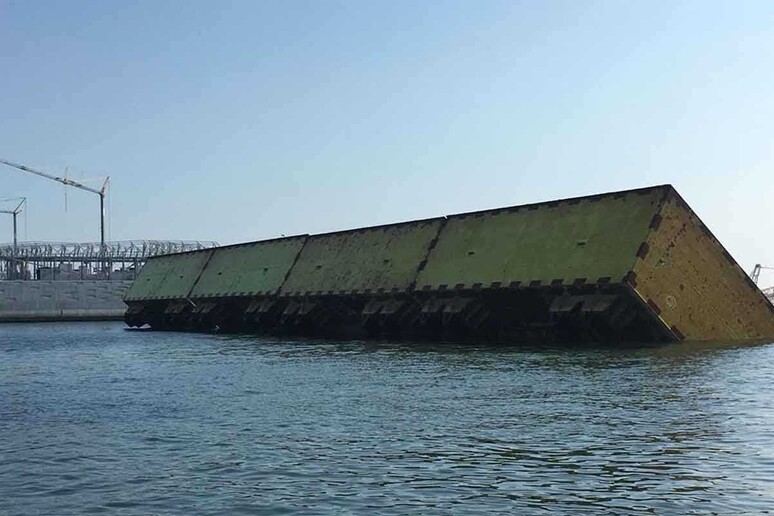The first real test of Venice's
MOSE flood barriers went well Monday night and the system may be
used in future emergencies in the lagoon city, Transport and
Infrastructure Minister Paola De Micheli said Tuesday.
"Last night the first test of MOSE went OK, and if the
emergency re-presents itself we will be able to raise the
barriers" to fight 'acqua alta' flooding, she said.
Last month another key test in raising the barriers of
the Venice MOSE anti-flood system also went well with a problem
with vibrations resolved, the Consorzio Venezia Nuova
consortium said.
Testing has gone up a gear after a disastrous flood on
November 12 that killed two people and left the lagoon city on
its knees.
The MOSE barriers were raised Monday night at the mouths of
the port of Malamocco.
Even in conditions of moving tides, the consortium said, the
barrier showed "clear stability".
As for the problems of vibrations found in an October 24
test, the latest test showed that "the interventions carried out
and the modification of the procedures have solved the
problems".
MOSE testing will get into full swing next year, the
consortium said shortly after the dramatic acqua alta (high
water) of November 12.
According to the latest schedule, the long-delayed system
will be ready for use by the end of 2021.
Experimental raising of the barriers is already scheduled for
the whole of 2020, it said, at a rate of one every 45 days.
There has been controversy over a failure to ready the MOSE
project in time for the 187 cm tide that wrecked the lagoon
city and killed two people.
The government has named former state property agency
Demanio chief Elisabetta Spitz as new extraordinary commissioner
for the MOSE project.
The MOSE system must be finished despite its being already
obsolete, Foreign Minister and anti-establishment 5-Star
Movement (M5S) leader Luigi Di Maio has said.
Projects like MOSE, which are currently due to be up and
running in 2021, were "born old and stuffed with kickbacks and
corruption but now, although it isn't the best possible
solution, it must be completed as soon as possible to protect
Venice immediately", he said.
"We won't pretend not to see where the blame lies," he said.
In September the updated 2018 balance sheet of the consortium
building MOSE said the flood barriers will be handed over to the
city council at the end of 2021 to protect the lagoon city from
acqua alta or high water levels such as the 187 cm tide that hit
Monday, the highest in 50 years.
The innovative and complex system of barriers, which cost 74
million euros in 2018 alone, will be completed at the end of
June 2020, ushering in the final phase of testing.
Launched in 2003 and originally slated for completion in
2016, the MOSE project to build a system of retractable dikes
has been at the centre of a slew of corruption scandals.
MOSE stands for MOdulo Sperimentale Elettromeccanico, or
Experimental Electromechanical Module, and echoes Moses of
parting the Red Sea fame.
The 5.5 billion euro (up by 1.3 billion form the first
estimate) project is intended to protect the city of Venice and
the Venetian Lagoon from flooding.
The project is an integrated system consisting of rows of
mobile gates installed at the Lido, Malamocco, and Chioggia
inlets that are able to isolate the Venetian Lagoon temporarily
from the Adriatic Sea during acqua alta high tides.
Together with other measures, such as coastal reinforcement,
the raising of quaysides, and the paving and improvement of the
lagoon, MOSE is designed to protect Venice and the lagoon from
tides of up to 3 metres (9.8 ft).
The Consorzio Venezia Nuova is responsible for the work on
behalf of the Ministry of Infrastructure and Transport - Venice
Water Authority.
Construction began simultaneously in 2003 at all three lagoon
inlets, and as of June 2013, more than 85% of the project had
been completed.
ALL RIGHTS RESERVED © Copyright ANSA











